Buy this landscape artwork Mosaic 'Rizière' by Casamance by Lois Diallo on canvas, ArtFrame, poster and wallpaper, printed on demand in high quality.
About "Mosaic 'Rizière' by Casamance"
by Lois Diallo
About the artwork
It took me a while to realise that a 'rizière' is not a slip of the French word rivière. No, rizière refers to rice fields in the Basse Casamance region of Senegal. This region has a long tradition of rice cultivation, which plays a central role in the local economy and culture. The rice fields are often irrigated by a system of dykes that protect the fields from saltwater tides. These dykes are traditionally made of mangrove poles, wickerwork and earth. Efforts to maintain these rhizieres and protect them from salinisation are vital for local communities.
Casamance is also experimenting with innovative farming methods, such as integrating ducks into rice fields. This method, which requires no chemicals, uses dung from ducks as fertiliser and contributes to a more sustainable form of rice farming. The initiative, supported by local partners and NGO's, aims to reduce labour intensity for women while improving rice production.
However, there are also challenges facing rice farming in this region. Problems such as salinisation and soil acidification have led to a decline in rice production and made some fields unusable. These problems are partly due to natural factors such as sea intrusion and oxidation of pyrite in the soil.
Conceived by Lois Diallo, visualized with AI.

About Lois Diallo
About the creator: Loïs Diallo is Your Woman in Senegal. She lives in Senegal in winter and in the Netherlands the rest of the year. She is a writer, photographer and blogger and is married to a Senegalese artist, Lodia... Read more…
 Germany
Germany Ordered in February 2023
Ordered in February 2023
 Germany
Germany Ordered in May 2020
Ordered in May 2020
 Germany
Germany Ordered in May 2019
Ordered in May 2019
 Germany
Germany Ordered in April 2021
Ordered in April 2021
 Germany
Germany Ordered in May 2023
Ordered in May 2023
 Netherlands
Netherlands Ordered in August 2020
Ordered in August 2020
 Netherlands
Netherlands Ordered in July 2018
Ordered in July 2018
 Netherlands
Netherlands Ordered in July 2023
Ordered in July 2023
 Netherlands
Netherlands Ordered in April 2021
Ordered in April 2021
 Netherlands
Netherlands Ordered in October 2020
Ordered in October 2020
 Germany
Germany Ordered in March 2020
Ordered in March 2020
 Germany
Germany Ordered in January 2020
Ordered in January 2020
About the material
ArtFrame™
Interchangeable Art Prints
- High-quality print
- Easily interchangeable
- Acoustic function
- Large sizes available
Discover the artworks of Lois Diallo
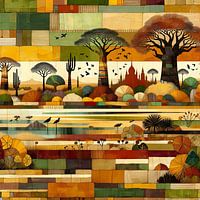 Collage of African landscape and lagoonLois Diallo
Collage of African landscape and lagoonLois Diallo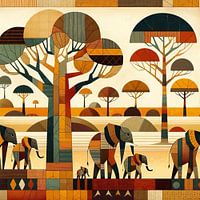 Collage African elephants on the African savannahLois Diallo
Collage African elephants on the African savannahLois Diallo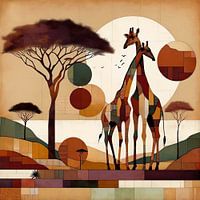 Collage African landscape with giraffe couple and acaciaLois Diallo
Collage African landscape with giraffe couple and acaciaLois Diallo Collage African landscape with elephant familyLois Diallo
Collage African landscape with elephant familyLois Diallo Collage African landscape with acacia'sLois Diallo
Collage African landscape with acacia'sLois Diallo Mixed media African landscape with elephant familyLois Diallo
Mixed media African landscape with elephant familyLois Diallo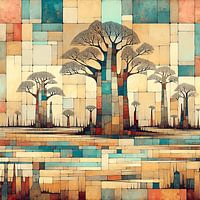 Collage/mixed media African landscape with baobab treesLois Diallo
Collage/mixed media African landscape with baobab treesLois Diallo Collage colourful African village lifeLois Diallo
Collage colourful African village lifeLois Diallo Mosaic of African elephantsLois Diallo
Mosaic of African elephantsLois Diallo Collage/composition of lagoon cq bird sanctuary in SenegalLois Diallo
Collage/composition of lagoon cq bird sanctuary in SenegalLois Diallo Digital patchwork tapestry inspired by AfricaLois Diallo
Digital patchwork tapestry inspired by AfricaLois Diallo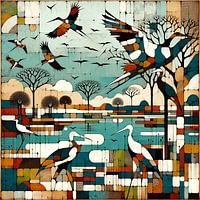 Collage/mosaic of African landscape with storksLois Diallo
Collage/mosaic of African landscape with storksLois Diallo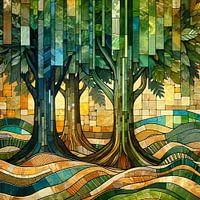 Collage/mosaic 3 trees in an African forest on undulating groundLois Diallo
Collage/mosaic 3 trees in an African forest on undulating groundLois Diallo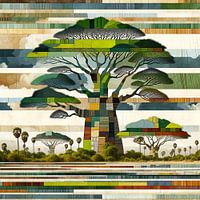 Collage baobab, acacia's and bushesLois Diallo
Collage baobab, acacia's and bushesLois Diallo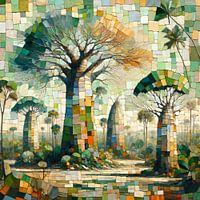 Collage baobab and papaplub treesLois Diallo
Collage baobab and papaplub treesLois Diallo Collage the colours of Ile de Gorée in SenegalLois Diallo
Collage the colours of Ile de Gorée in SenegalLois Diallo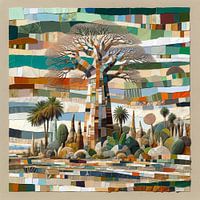 Collage baobab in cactus forestLois Diallo
Collage baobab in cactus forestLois Diallo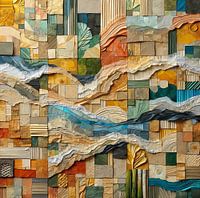 Abstract collage of sea, sand and earthLois Diallo
Abstract collage of sea, sand and earthLois Diallo Collage 3 baobabs in the afternoon in AfricaLois Diallo
Collage 3 baobabs in the afternoon in AfricaLois Diallo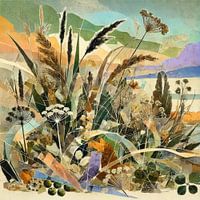 meadow with grasses and umbelliferous flowersLois Diallo
meadow with grasses and umbelliferous flowersLois Diallo













 Digital art
Digital art Farm
Farm Landscapes
Landscapes Serene Peace
Serene Peace Vibrant Colors
Vibrant Colors









